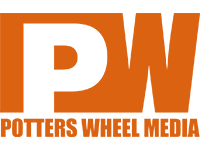Make Every Click Count
Landing page optimization has become crucial for businesses with digital presence seeking to boost their online success. A well-optimized landing page can significantly impact conversion rates, turning casual visitors into valuable leads.
Before delving into the specific best practices for landing pages, let’s first understand why optimizing for conversions is crucial. Conversion rate optimization plays a pivotal role in maximizing the return on investment (ROI) from your marketing efforts. It ensures that the traffic driven to your landing page results in tangible actions, such as making a purchase, filling out a form, or subscribing to a newsletter.
A Compelling Offer
The cornerstone of any effective landing page is a compelling offer. Your offer should provide value that significantly exceeds what you’re asking from the visitor. The perceived value theory in marketing says that customers are more likely to take action when they perceive a high value in what’s being offered to them.
For example, if you are collecting email addresses, offering a valuable reading piece or a free trial can be a compelling incentive. People tend to respond positively when they receive something of value for free.
Similar psychological triggers can be used to increase conversion rates. For instance, using urgency like LIMITED- TIME OFFER! Or CLOCK IS TICKING!, scarcity LIMITED STOCK! or highlighting a problem your product solves can stimulate action. Here people tend to place a higher value on scarce or in high demand products and services.
Amazon often uses urgency and scarcity tactics by displaying phrases like “Only 5 left in stock – order soon” to prompt customers to make a purchase.
Nail Headlines
Headlines are the first thing visitors see, and they should immediately capture attention while conveying the page’s purpose. As per the attention economy, where attention is a limited resource, headlines must effectively compete for it. Like, Airbnb’s landing page features compelling headlines like “Book unique homes and experiences all over the world”.
Focus on highlighting the value and benefits your product or service offers, rather than just listing features. Explain how your offering can solve the visitor’s problem or fulfill their needs.
Keep It Simple
Simplify your message to make it easily digestible. Ensure the messaging on your landing page aligns with the ad that led the visitor there. A seamless transition from ad to landing page with message consistency increases trust and conversions. Building trust is also crucial for conversion. Elements like customer reviews, logos of prominent clients, and case studies act as social proof and boost credibility.
Design’s Impact on Conversion
Design plays a pivotal role in conversion rates. A clean and modern layout aids visual navigation, reduces cognitive load, and presents content effectively. As per the user experience practices, a smooth designer interface increases user engagement and conversion. The design must also be a reflection of the brand identity.
Ensure that headings are bold and easy to read, CTA buttons are easily accessible with attention-grabbing colors, and white space is utilized effectively. By maintaining a visual hierarchy you can guide your customer’s attention to matters of primary importance.
Apple’s minimalist design on its product pages allows visitors to focus on product details and CTAs. The use of monochrome and the same font across their digital presence increases brand recollection value.
Small screen delivers ample opportunities
Today over 55% of the website traffic is generated from smartphones, hence mobile optimization is crucial to achieve success in the digital space. With an increasing number of users accessing websites through smartphones, a landing page that isn’t well-optimized for mobile can lead to missed opportunities. It directly impacts user experience, bounce rates, and conversion rates.
Firstly, responsive design ensures that a landing page adapts seamlessly to various screen sizes, providing a consistent and user-friendly experience. A mobile-optimized layout and navigation enable visitors to easily access essential information and call to action.
Secondly, page load speed is crucial for mobile users who often have limited patience. Slow-loading landing pages can deter potential leads or customers. Mobile optimization techniques such as image compression and minimizing resource-heavy elements are essential for ensuring fast loading times.
Moreover, mobile SEO plays a vital role in driving organic traffic to a landing page. Search engines prioritize mobile-friendly websites, making it imperative to meet mobile SEO standards. This ensures visibility and accessibility for users searching on mobile devices.
By incorporating these practices throughout the entire process of conceptualizing and crafting a landing page, you can significantly boost your conversion rates. The key is consistently exceeding your customers’ expectations while ensuring a user-friendly experience. So the next time you decide to have a landing page for your business, make sure to partner with the best digital marketing agency to increase your conversion rates.


